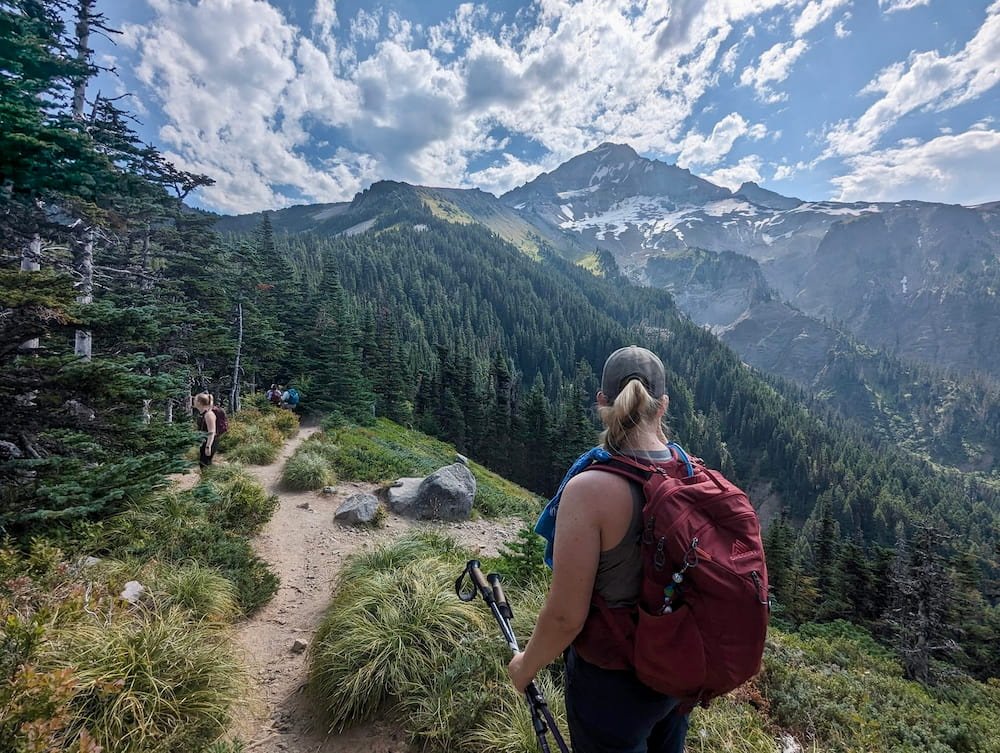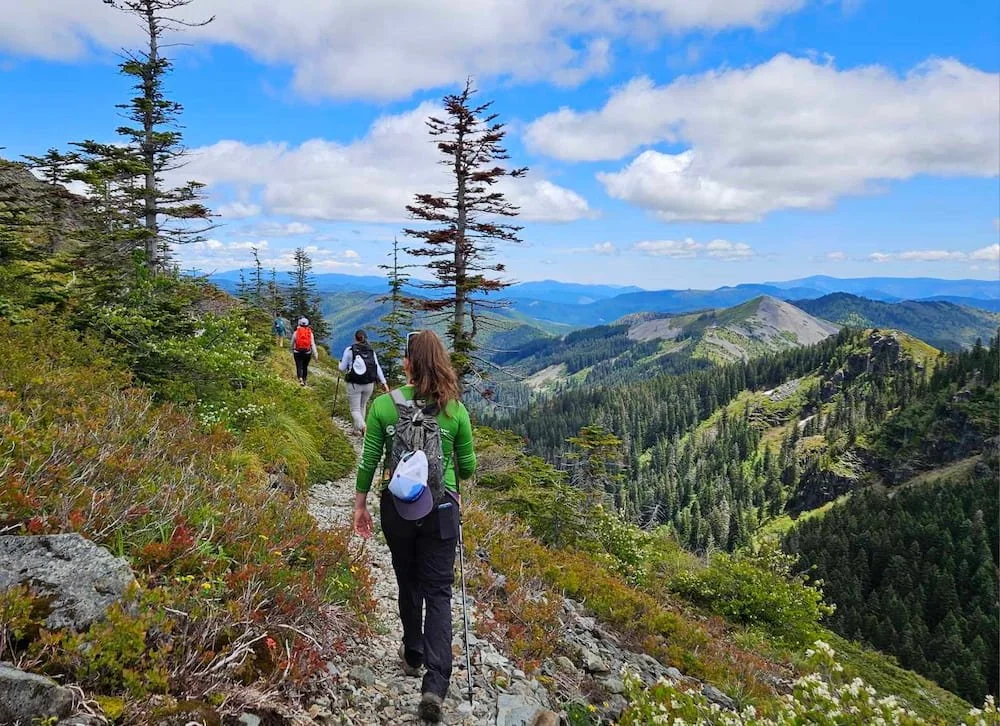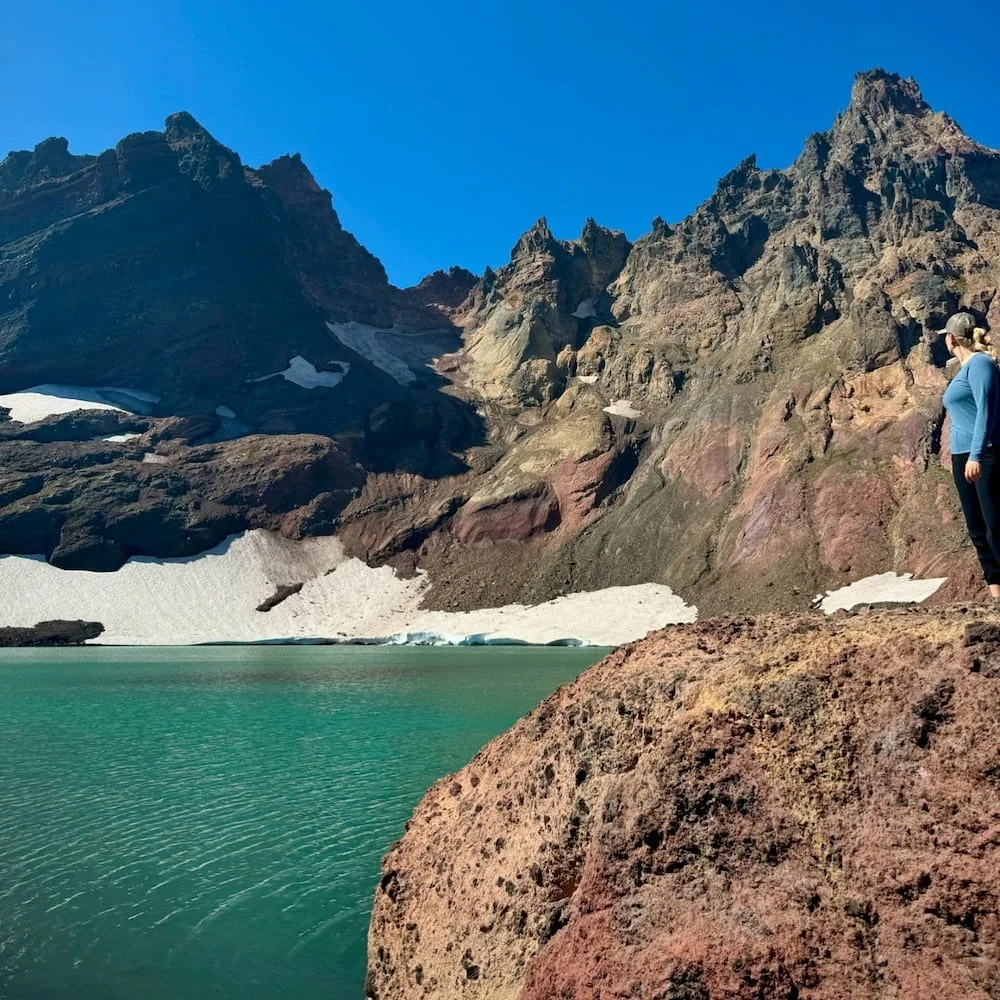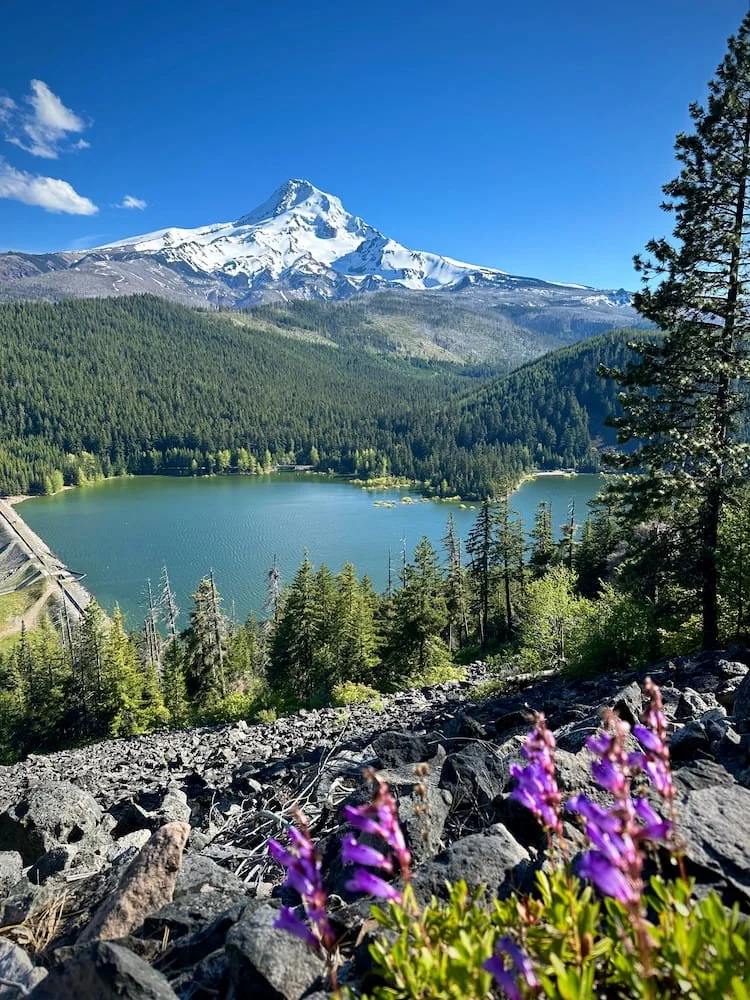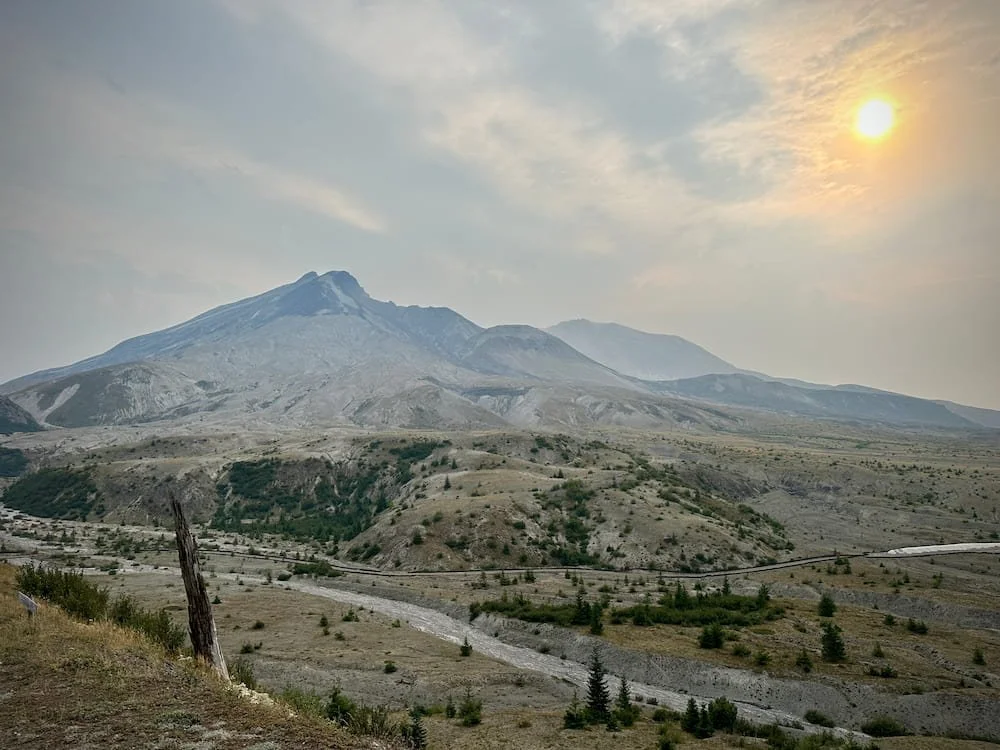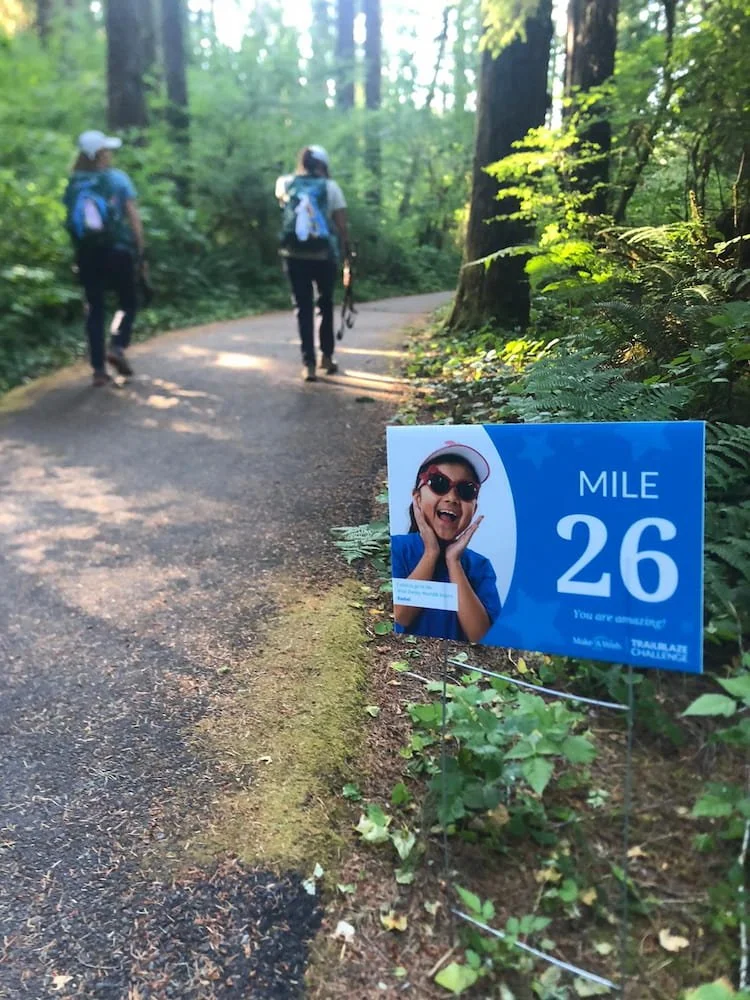How to Train for a Bigger Hike: Conquer Length, Elevation, and Your Limits
Have you ever dreamed of hiking the rim of the Grand Canyon, summiting Colorado’s Fourteeners, or through-hiking the Enchantments in Washington? Big hikes—whether they’re about covering long distances, conquering significant elevation, or both—are incredible milestones. But they require more than ambition to achieve.
As someone who has tackled ambitious challenges like 28-mile day hikes and is currently training to summit Mount Saint Helens, I understand the preparation it takes to tackle these goals safely and successfully. With thoughtful planning and a little patience, you’ll find yourself ready to take on those big trails you’ve been eyeing.
1. Start Small and Build Gradually
Every epic hike begins with small steps, and where you start will depend on your current fitness level. If you’re new to hiking, a 3–5-mile trail with gentle elevation gain is a great starting point. For more experienced hikers, begin with trails that slightly challenge your comfort zone, whether that means increasing the mileage or tackling steeper inclines.
How to Progress:
Set Incremental Goals: Aim to increase your distance or elevation gain by about 10-20% per week. For example, if you’re comfortable with a 5-mile hike, try 5.5-6 miles the next week, then 6-7.5 miles, and so on.
Alternate Focus: One week, focus on adding distance to build endurance. Next, prioritize elevation to strengthen your climbing ability. Alternating prevents overuse injuries and keeps training dynamic.
Track Your Progress: Apps like AllTrails or a hiking journal can help you monitor your improvements over time.
What to Look for in Training Hikes:
Varied Terrain: Choose trails with different surfaces (dirt, rocky, forested) to simulate real hiking conditions and build stability.
Safe Accessibility: Training hikes should be accessible year-round or during your available season, with trailheads that are easy to find and navigate.
Manageable Elevation: Start with smaller elevation gains, then move to steeper trails as you progress. Switchbacks and gradual climbs are great for building strength and confidence.
Proximity: Select trails close to home or within a manageable drive so you can train regularly without long travel times.
Tips for Beginners: If you’re unsure where to begin, prioritize trails labeled as “easy” to “moderate.” Many parks and trail networks have introductory routes, and shorter loops can be repeated to build stamina.
Remember: starting small is not only okay—it’s smart. Consistency is the key to making progress, and every hike, no matter how short, is a step toward your bigger goal.
2. Incorporate Strength and Cardio Training
Big hikes require a combination of strength, endurance, and cardiovascular fitness. While regular hiking helps build these naturally, targeted exercises will prepare your body for the specific demands of long distances, steep ascents, and uneven terrain.
Why It Matters:
Strength builds the muscle power you need to carry your gear, stabilize on rocky terrain, and climb steep trails.
Cardio ensures your heart and lungs can keep up with sustained effort, especially at higher altitudes where oxygen is thinner.
Strength Training for Hikers
Lower Body:
Squats: Develop quads, glutes, and hamstrings for uphill climbs.
How to: Perform 3 sets of 10–15 bodyweight squats, gradually adding dumbbells or a weighted backpack.
Lunges: Improve balance and strengthen each leg individually.
How to: Alternate legs for 3 sets of 10–12 reps. Step-ups on a sturdy bench or box are a great alternative.
Step-Ups: Simulate the motion of climbing.
How to: Use a box or a bench that mimics the height of trail obstacles. Perform 3 sets of 10–12 reps with each leg.
Core Stability:
Planks: Strengthen the core for better balance and posture during long hikes.
How to: Hold a plank for 20–60 seconds. Gradually increase time or add side planks for variation.
Russian Twists: Build rotational strength to stabilize on uneven ground.
How to: Perform 3 sets of 12–15 reps with a light weight.
Upper Body:
Rows or Pull-Ups: Strengthen back and shoulder muscles for carrying a backpack. Resistance bands can be an alternative.
How to: Perform 3 sets of 8–10 reps.
Push-Ups: Build upper-body endurance for carrying and adjusting gear.
How to: Perform 3 sets of 10–15 reps, modifying as needed.
Cardio Training for Endurance
Steady-State Cardio:
Activities like brisk walking, cycling, or swimming build endurance for sustained effort.
How to: Incorporate 30–60 minutes of steady-state cardio 2–3 times a week. For beginners, start with 20 minutes and gradually increase.
Interval Training:
Boosts stamina and mimics bursts of effort required for steep climbs.
How to: Alternate 1–2 minutes of high-intensity effort (e.g., sprinting, fast cycling, or stair climbing) with 1–2 minutes of rest. Perform 4–8 intervals.
Stair Climbing or Hill Repeats:
Simulates the demands of uphill hiking.
How to: Find a set of stairs or a hill and hike up at a moderate-to-challenging pace, then walk back down. Repeat for 20–30 minutes.
Weighted Pack Training:
Practice hiking with a loaded backpack to build strength and cardio simultaneously.
How to: Start with 10–15 pounds, gradually increasing weight to simulate your trail load. Add inclines for an extra challenge.
Plan Your Training Schedule
Here’s an example of how to integrate strength and cardio into your week:
Monday: Strength training (lower body + core)
Tuesday: Steady-state cardio (brisk walk or light jog)
Wednesday: Rest or light yoga
Thursday: Strength training (upper body + core)
Friday: Interval training (hill repeats or stair climbing)
Saturday: Long hike or weighted pack training
Sunday: Rest or active recovery (stretching, light walk)
Cross-Training for Variety
To prevent burnout and injuries, incorporate other activities like swimming, kayaking, or even dance classes. These build cardio fitness and work different muscle groups, enhancing overall endurance and agility.
Pro Tip: Always listen to your body. Rest when needed, and don’t push through pain. Building fitness is a long-term process, so consistency and gradual progression are more effective than overtraining.
3. Practice Hiking with a Weighted Pack
Training with a weighted pack is an excellent way to prepare for longer or more strenuous hikes. Start with a manageable weight, around 10-15 pounds, and gradually increase it over time to build strength and endurance. Your ultimate goal should be to carry a load similar to what you’d bring on your planned hike, which could include water, food, extra layers, and gear—typically 20-30 pounds for day hikes or more for multi-day treks.
Hiking with a weighted pack on trails with elevation gain mimics the physical demands of more challenging hikes, helping you strengthen your legs, core, shoulders, and back while improving your balance. It's also a chance to adjust your gear for comfort, including your pack’s fit, the way weight is distributed, and how your shoes handle the added strain.
By incorporating this into your training, you'll not only prepare your body for the demands of tougher trails but also build confidence in your ability to manage longer distances and steeper climbs.
4. Refine Your Nutrition and Hydration Strategy
Dialing in your nutrition and hydration strategy is essential for tackling longer or harder hikes successfully. Proper fueling and hydration sustain your energy levels, help you recover faster, and prevent issues like fatigue, cramping, or dehydration.
Start by experimenting on shorter hikes to figure out what works best for your body. Aim to eat a small, balanced meal 1–2 hours before your hike that includes carbohydrates for quick energy and some protein and fats for sustained fuel. During the hike, plan to snack regularly—every 60–90 minutes—to maintain energy levels. Good options include trail mix, energy bars, jerky, fruit, or sandwiches. Pack foods that are easy to carry and eat on the go but also provide the calories and nutrients your body needs.
For hydration, bring enough water to last the hike and consider using a hydration bladder for easy access while moving. The general rule is to drink about half a liter (16–20 ounces) of water per hour of hiking, but this can vary depending on factors like weather, intensity, and your sweat rate. Electrolyte drinks or tablets are a great addition, especially on long hikes or in hot conditions, to replenish lost sodium, potassium, and magnesium.
If your hike is longer than 6–8 hours, incorporate more substantial meals to keep your energy stores replenished. You might also practice consuming certain foods or drinks you'll bring on tougher hikes to ensure they agree with your stomach and provide the necessary fuel.
Refining your strategy through trial and error will help you feel confident and well-prepared when tackling challenging trails. Take note of what works best for you so you can apply it consistently in your training and future hikes.
5. Build Mental Resilience
Longer and harder hikes aren’t just a physical challenge—they’re a mental one too. Building mental resilience is just as important as physical training to ensure you can push through moments of doubt, fatigue, or discomfort.
Start by gradually stepping out of your comfort zone during training hikes. Choose trails with increasing difficulty to expose yourself to new challenges, such as steeper climbs, rougher terrain, or less familiar conditions. These experiences teach you how to stay focused and calm when faced with adversity.
Visualization is another powerful tool. Before a hike, mentally rehearse overcoming tough sections of the trail, such as steep inclines or long stretches. Picture yourself confidently reaching your goal, even when obstacles arise. This practice can make real challenges feel more manageable.
Embrace discomfort during your training. Weather a bit of rain, hike when you’re tired, or push through a challenging section when your legs are burning. These moments help you build the grit and determination needed for longer hikes.
Break the hike into smaller, achievable segments. Instead of focusing on the entire distance or elevation gain, set mini-goals, like reaching the next trail marker or ridge. This technique keeps you motivated and prevents the journey from feeling overwhelming.
Finally, develop a mantra or motivational phrase that resonates with you. Repeating it during difficult moments can help refocus your mind and remind you of your strength and purpose.
Remember, mental resilience grows with practice. Each time you face and overcome a challenge, you’ll strengthen your mindset, preparing you to confidently tackle tougher trails in the future.
6. Test Your Gear on Smaller Hikes
Testing your gear on shorter, less demanding hikes is a crucial step in preparing for longer or more challenging adventures. It ensures your equipment works properly, fits comfortably, and meets your needs, so you’re not caught off guard on the trail.
Use all the gear you plan to bring on your longer hike, including your backpack, clothing layers, footwear, and any technical equipment like trekking poles or hydration systems. Wear your hiking boots or shoes on multiple smaller outings to break them in and check for issues like hot spots or blisters. If something feels off—be it the fit of your boots, the weight distribution in your pack, or the performance of a piece of clothing—it probably isn’t right. Addressing these issues early can save you from discomfort or even injury on longer hikes.
Pay close attention to how your pack feels when loaded with the weight you plan to carry. Adjust the straps, hip belt, and load distribution to optimize comfort and balance. Make sure frequently used items like snacks, water, or navigation tools are easy to access without unnecessary hassle.
Experiment with your clothing system in different conditions. Test base layers, mid-layers, and outerwear for breathability, insulation, and water resistance. Observe how quickly they dry, how they handle sweat, and whether they cause chafing or restrict movement during extended use.
If you’re unsure about your gear or feel like something could work better, there are excellent resources to help. For example, visiting a local outdoor retailer like REI allows you to get expert advice, try on different options, and even attend workshops to improve your knowledge. Experienced staff can help ensure you’re making the right choices for your specific needs and activities.
Using smaller hikes to test and refine your gear helps you identify and resolve potential issues in a low-stakes environment. By the time you’re ready for your more ambitious adventure, you’ll feel confident that your gear is comfortable, reliable, and tailored to your specific needs.
7. Tap into a Supportive Community
Connecting with a supportive hiking community can make your journey more enjoyable and rewarding while offering valuable insights and encouragement along the way. Surrounding yourself with like-minded adventurers allows you to share experiences, gain tips, and find hiking buddies who inspire and motivate you.
At Women Who Explore, we’re all about creating opportunities for women to connect with nature and each other. Our community offers group hikes, skill-building events, and a space to build meaningful friendships with other women who share your love for the outdoors. Whether you’re discovering new trails, celebrating milestones, or overcoming challenges, being part of our network can help you grow as a hiker and feel empowered on your journey.
Final Thoughts
Training for a big hike takes effort, but it’s a journey worth every step. The lessons you learn about yourself—your resilience, strength, and determination—are as valuable as reaching the destination. With the right preparation, you’ll be ready to tackle your next adventure and inspire others to do the same.
So go ahead, lace up your boots, and start training. I’ll see you on the trails!
By Jasmina Shappy: Women Who Explore Washington State Ambassador
Jasmina is passionate about empowering women to discover their strength and resilience through outdoor exploration. She firmly believes that every woman, no matter her starting point, can achieve her goals on the trail. Through her role as a Women Who Explore regional host, Jasmina fosters a welcoming and supportive community where women can push their limits, connect with like-minded adventurers, and celebrate their progress.
Even before settling in the Pacific Northwest in 2023, Jasmina has always sought connection with nature. Hiking for a cause has become a cornerstone of her outdoor journey, from completing Make-A-Wish Trailblaze hikes to training for her 2025 summit of Mount Saint Helens with Climb for Clean Air.
When she’s not leading hikes or organizing events, Jasmina enjoys exploring trails with her three dogs, finding joy in every moment spent outdoors.
Instagram: @jassylovesadventures
Web: www.jassylovesadventures.com/





